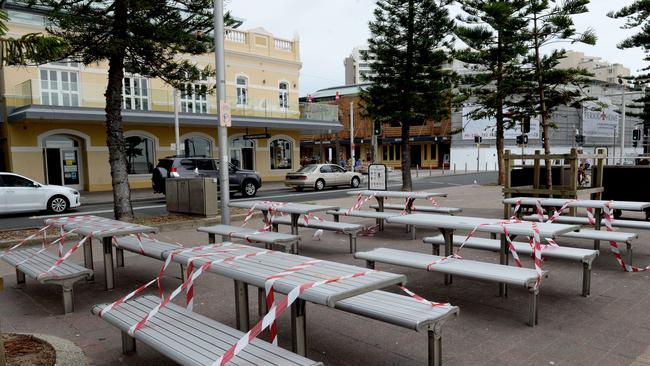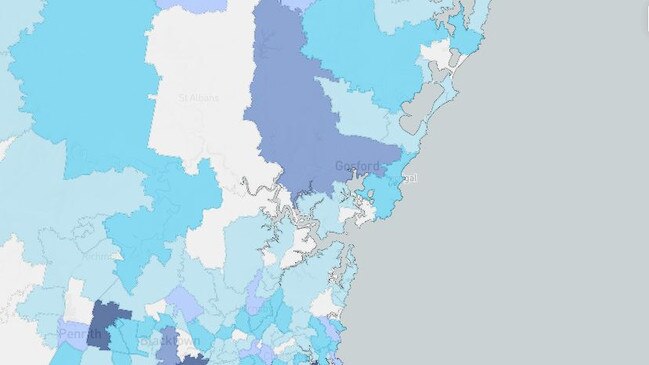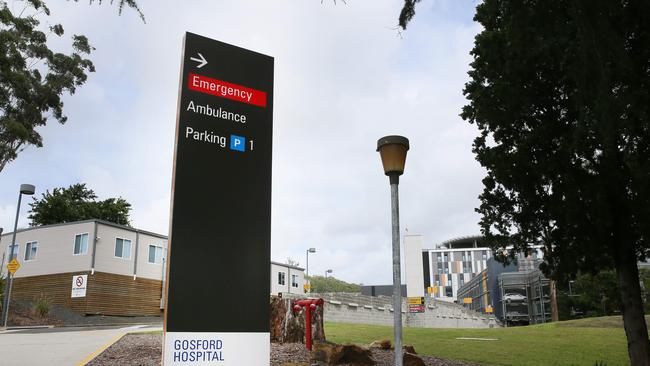Coronavirus NSW: Sydney suburbs with most cases, best recovery rate
NSW Health has released an Australia-first heat map detailing COVID-19 cases by postcode. Use the interactive to find how many people have recovered and the estimated number of active local cases and tests completed in your suburb.
Local
Don't miss out on the headlines from Local. Followed categories will be added to My News.
- SYDNEY METRO WEST: everything you need to know
- Secret document guides Gladys’ coronavirus rule relaxation
NSW Health has released postcode-by-postcode data detailing the precise COVID-19 picture in your suburb.
The total number of diagnosed cases, recovery rates, active cases and quantity of tests carried out is now freely available, and specific to your exact location.
Statistics reveal which suburbs have made the most inroads into stamping out the virus completely and which are still faced with a challenge - including Hornsby, Penrith and the eastern suburbs.
More than 3000 NSW residents have been diagnosed with COVID-19 since the virus first appeared in the suburbs of Sydney in late January.
Three months later, NSW Health has confirmed the state is home to just over 650 ‘active’ cases of coronavirus, with only 66 of these diagnosed in the last 14 days.
Premier Gladys Berejiklian said NSW was the first Australian state to create COVID-19 heat maps to show residents the number of cases, tests and recoveries in their suburb.
“NSW has one of the highest COVID-19 testing rates in the world. We have tested more than 200,000 people and have capacity to test more than 110,000 in a fortnight,” Ms Berejiklian said.
“This new way of showing NSW Health data will help communities understand the numbers of people being tested, and encourage more people with symptoms to come forward for testing when they see the impact COVID-19 is having on their local area.”
Ms Berejiklian has reminded locals to be maintain vigilance after social distancing restrictions were eased today — particularly those who are vulnerable.
Incredibly, the former coronavirus hotspot of Ryde local government area has not recorded a single case in more than a fortnight. Neither has the City of Parramatta, Woollahra or Mosman.
Coronavirus: Prof Mary-Louise McLaws warns people not to relax over reduced cases
Premier Gladys Berejiklian praised the community for coming forward for testing, but cautioned people against doing the wrong thing when relaxed rules about home visits come into effect today.
There will be new opportunities for getting back to normal “if we all stick together in May”, she said.
Chief health officer Kerry Chant said she expected the rates of COVID-19 recovery to “climb significantly”. FIND OUT HOW YOUR AREA IS RECOVERING BELOW
SYDNEY
Of all Sydney’s Local Health Districts, Western Sydney is the closet to knocking down coronavirus withjust four cases diagnosed in the last fortnight.
Of the 274 cases confirmed in the area 233 have now recovered – a recovery rate of 85 per cent.
There are 41 cases considered still ‘active’ in the district.
Parramatta and Cumberland did not record a single case in the last two weeks. The Hills Shire and Blacktown recorded two apiece.
South Eastern Sydney Local Health District, home to the virus hotpsot of Bondi Beach, has also made incredible inroads into bringing the spread of the virus under control.
The health district takes in the eastern suburbs as well as the local government areas down to the Sutherland Shire.
There are just 59 active cases of COVID-19 left in the district, with 612 having now recovered.
The last two weeks have yielded just four cases in the Waverley local government area – which takes in Bondi – and no cases at all in neighbouring Woollahra.
The once badly hit Randwick has had just one case in the last two weeks while the Bayside local government area has gone a full fortnight without a single new case.
The Sutherland Shire has had just one new case while Georges River has gone two weeks without a new case.

South Western Sydney Local Health District still has a way to go before being declared coronavirus free. Of the 236 cases 159 have fully recovered leaving 77 still fighting the disease.
Canterbury-Bankstown local government area is still struggling to stop the spread with seven fresh cases in the last two weeks.
Penrith has also had four cases with Camden and Fairfield recording two apiece.
However in better news there has been just one new case in Liverpool.
Campbelltown, Wingericarribee and Wollondilly have gone two weeks without a single fresh case.
The Sydney Local Health District also has a way to go before being declared free of the virus.
Of the 247 to have contracted the disease 93 are still considered active.
The district takes in the local government area of the City of Sydney as well as the Inner West.
Burwood is leading the way with no new cases in two weeks.
Nearby Strathfield has had just one with two for the neighbouring Inner West Council area.
Both the City of Sydney and Canada Bay are way ahead of where they were a few weeks ago with three new cases each in the last 14 days.

Northern Sydney Health District still has more than double the active cases than any other Sydney Health District.
Of the 530 total cases recorded 373 have recovered leaving 157 still battling COVID-19.
However the statistics on fresh cases from the last two weeks paint an improving picture.
Mosman, Kuring-gai, Lane Cove, Ryde and Willoughby council areas have all recorded two weeks without a single new case.
North Sydney and Hunters Hill have had just one fresh case each and Northern Beaches – which was at one point recording dozens each day – recorded only two.
Hornsby recorded six fresh cases in the last fortnight.
THE REGIONS
The Far West Local Health District is on target to be coronavirus-free with one remaining ‘active’ case in the region and one recovered case.
Both were recorded in Broken Hill, leaving every other local government area in the state’s far western reaches still untouched by COVID-19.
The Mid North Coast Local Health District is the next healthiest with five or fewer current coronavirus patients still ill with the disease.
The Daily Telegraph can reveal two of these cases were diagnosed in the last fortnight, with two appearing in the Coffs Harbour local government area at postcode 2450.
The local government areas of Bellingen, Nambucca, Kempsey, and have not had a single case of coronavirus recorded within the last fortnight.

Northern NSW local health district has 11 or fewer ‘active’ cases with only the Byron local government area recording a case within the last fortnight, at postcode 2481, which centres on Byron Bay itself.
Tweed, Ballina, the Richmond Valley and the Clarence Valley local government areas have not had a diagnosed case in more than 14 days.
In the Murrumbidgee local health district just one case has been recorded in the last month, at Wagga Wagga.
11 or fewer ‘active’ cases remain from a total of 47 that were primarily diagnosed throughout March.
The local government areas of Federation, Griffith, Cootamundra, Berrigan, Narrandera, Hilltops, Greater Hume and Hay have not had a diagnosed case in over a month.
While Carrathool, Coolamon, Edward River, Junee, Leeton, Lockhart, the Snowy Valleys and Temora have never registered a single case.

In the Western NSW local health district, which stretches from Oberon in the south-east to Lightning Ridge in the north west, some 14 or fewer cases remain active, from a total of 47 diagnosed residents.
Only 10 of these cases were recorded in all of April, the last of which was diagnosed at Orange, on April 17, 13 days ago.
Local government areas including Dubbo, Wellington, Walgett, Narromine, Coonamble, Parkes, Gilgandra, Warrumbungle Shire, Brewarrina, Bourke, Cowra, Forbes, Lachlan, Warren, Cobar, Mid Western (Mudgee) and Blayney, have not recorded cases in a fortnight, a month or at all.
Southern NSW local health district has recorded just four cases in the whole of April, but local medicos insist there are still 22 cases considered active within that region.
Within the last fortnight just two new cases have been confirmed. One at Queanbeyan on April 24 and another at Goulburn on April 17, which was acquired interstate.
Upper Lachlan Shire, Yass Valley and Eurobodalla, have not had a case recorded in the whole of April.
The Bega Valley recorded one new case this month.

There has been a single case of coronavirus diagnosed in the Illawarra Shoalhaven local health district during the last fortnight, recorded on April 17 at the Wollongong postcode of 2517 which centres on Woonona and Russell Vale.
Of the region’s 112 cases just 25 are still considered to be active infections.
In the local government area of Shoalhaven the last recorded case was on April 8.
At Kiama the last recorded case to be diagnosed was back on April 2, and at Shellharbour, the last diagnosed case occurred on April 1.
Of a whopping 277 cases recorded in the Hunter New England local health district, 56 remain active.
The area, which stretches from Lake Macquarie in the south, Tenterfield to the north and west to Wee Waa, was among the hardest regions hit by coronavirus.
Of the 56 active cases, five were diagnosed in the last fortnight. One each at Armidale, Moree, Tamworth, and Cardiff at Lake Macquarie (all locally acquired cases); and another on the Mid-Coast near Taree.
Only the local government areas of Uralla and Dungog haven’t recorded a coronavirus case in April.

There has not been a new confirmed case within the Central Coast local health district since a Centrelink call centre staff member tested positive on April 18.
The district had recorded 117 confirmed cases of COVID-19, the majority contracted the virus overseas, and of these 115 cases have been released from daily follow up.
One person and their close contacts remain in isolation while a second person remains in hospital.
See our figures for the number of active cases below:
Far West 1
Mid North Coast 5
Northern NSW 11
Murrumbidgee 11
Western NSW 14
Southern NSW 22
Central Coast 24
Illawarra Shoalhaven 25
Western Sydney 41
Hunter New England 56
South Eastern Sydney 59
South Western Sydney 77
Nepean Blue Mountains 82
Sydney 93
Northern Sydney 157
Recovery rates:
South Eastern Sydney: 612 recovered from 671 cases
Northern Sydney: 373 recovered from 530 cases
Hunter New England: 221 recovered from 277 cases
Western Sydney: 233 recovered from 274 cases
Sydney: 154 recovered from 247 cases
South Western Sydney: 159 recovered from 236 cases
Central Coast: 92 recovered from 116 cases
Nepean Blue Mountains: 84 recovered from 166 cases
Illawarra Shoalhaven: 87 recovered from 112 cases
Northern NSW: 45 recovered from 56 cases
Southern NSW: 33 recovered from 55 cases
Mid North Coast: 45 recovered from 50 cases
Murrumbidgee: 36 recovered from 47 cases
Western NSW: 31 recovered from 45 cases
Far West: 1 recovered from 2 cases
Central Coast: 92 recovered from 116 cases
** NSW has recorded 3016 cases of coronavirus, 690 remain active cases and 2284 patients have recovered. 42 people have died. At time of publication, NSW Health could not provide data detailing to which local health district each fatality belonged. As a result, these deaths may be recorded as ‘active cases’ by the individual health districts**
